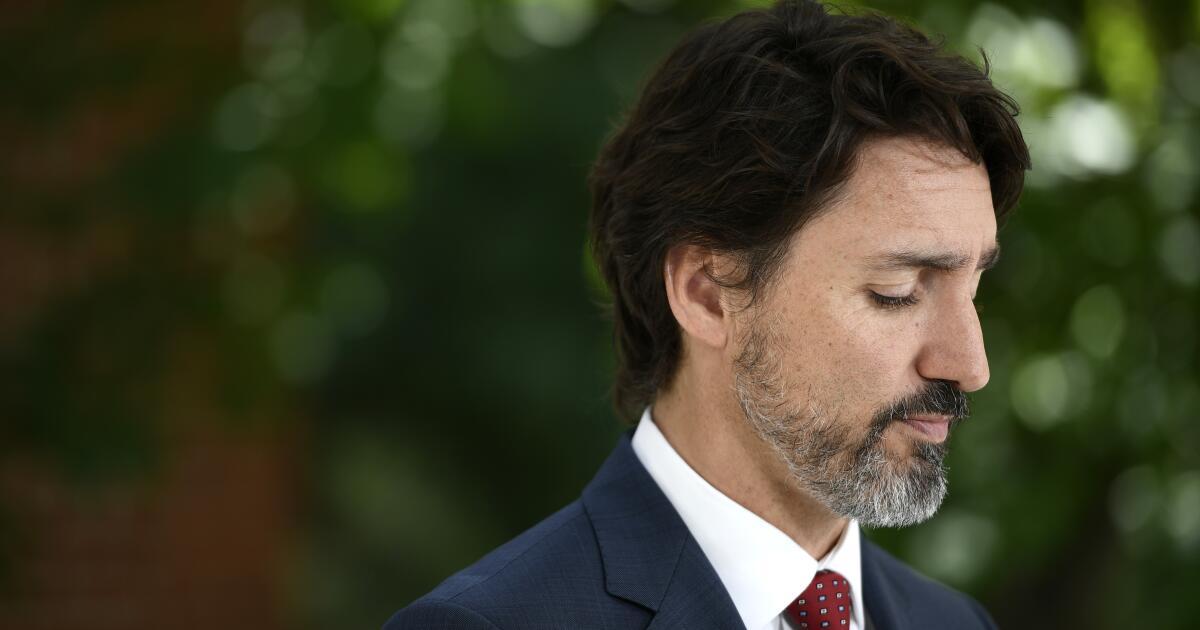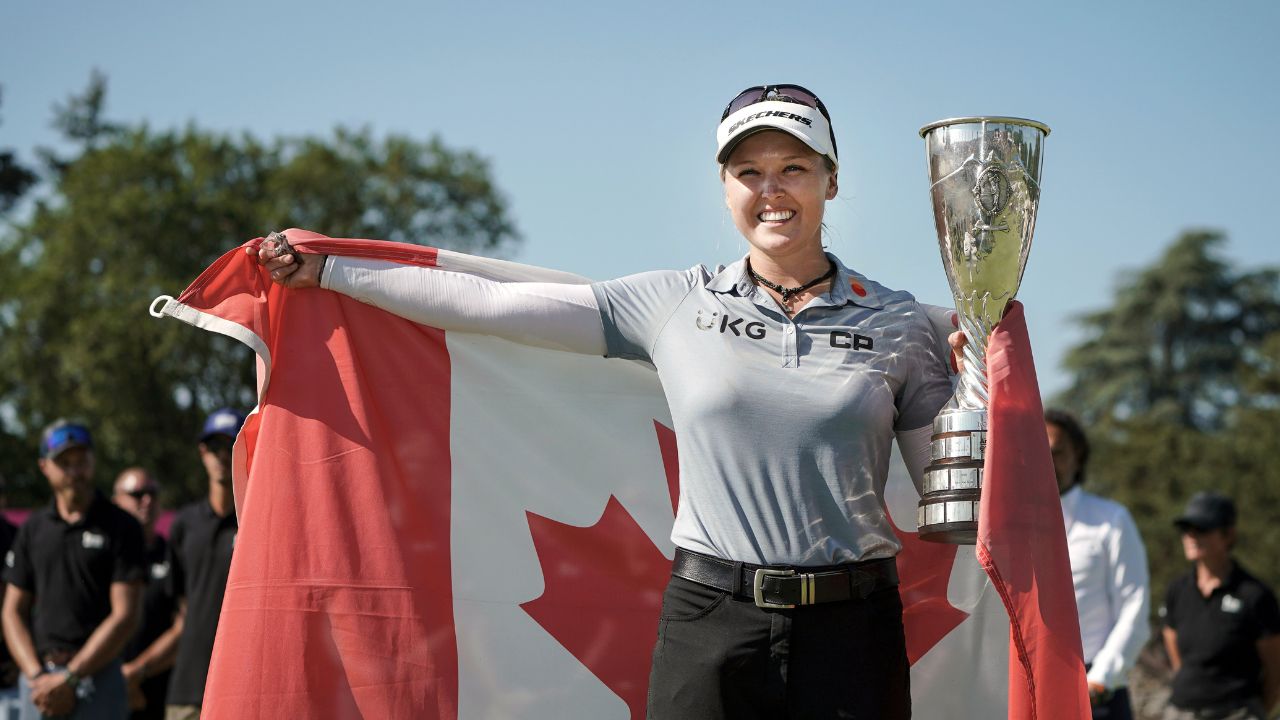Sports
Inside Canada’s rise to hammer-throwing greatness | CBC Sports

Camryn Rogers had already won gold by the time she stepped up for her sixth and final throw.
But it wasn’t until after the implement left her hands that the gravity of what she accomplished at the Olympics seemed to sink in for the 25-year-old from Richmond, B.C.
It was Rogers’ fifth throw, a 76.97-metre toss that leapfrogged her over American Annette Nneka Echikunwoke, that made her the first Canadian woman to ever win Olympic gold in hammer throw.
Rogers sank to her knees, taking a moment for herself in the circle.
After hugging her competitors, she ran to hug her coach, Mo Saatara, who can tell how she’s going to throw each day based on how she walks toward him. Then, she celebrated with her parents, including mother Shari, who’d been holding on tight to a locket her daughter gave her as a child, something she’s done at every competition.
It was the culmination of a dream that started for Rogers 12 years ago, and years of work by coaches behind the scenes to help Canadians compete with the best of the best in the hammer throw.
Two days earlier, Canadian Ethan Katzberg won gold in the men’s hammer throw with a distance of 84.12m on his first try. No one else was close, and it’s not even the furthest Katzberg has thrown this year.
Chilliwack, B.C.’s Rowan Hamilton, who bears a striking resemblance to Katzberg, finished in ninth place among the men, while Victoria’s Adam Keenan finished eighth in qualifying and did not move on to the final.
The results cement Canada as the best country in the world in hammer throw, a sport that has traditionally been dominated by competitors from European countries.
“Things like this don’t just happen overnight,” Rogers told CBC News Network’s Heather Hiscox the day after she won gold.
“I think that Canada has been pretty blessed to have had a lot of really amazing people who are so knowledgeable and invested and dedicated to the sport of throwing and especially hammer throw.
WATCH | Rogers becomes Canada’s new queen of hammer throw:
The reigning world champion Camryn Rogers throws a stunning 76.97m to win Canada’s first women’s individual athletics Olympic gold since 1928.
“To be able to spread and share their knowledge over the many years they’ve been involved in the community and to now see it really coming to fruition through all the people, the throwers who have been on the world stage, it continues to build.”
A turning point
The last time Canada won an Olympic medal in hammer throw was in Stockholm in 1912, when police officer Duncan Gillis took home silver with a 48.30m throw. Soon after, he left the sport to become a wrestler.
Women’s hammer throw wasn’t even part of the Olympic programme until 2000 in Sydney.
A turning point came a few years later, when renowned Ukrainian coach Dr. Anatoliy Bondarchuk moved to Canada and began coaching a group of athletes in Kamloops, B.C., leading up to the Beijing Olympics in 2008. Bondarchuk won an Olympic gold medal in 1972 and is known as one of the best coaches in the world.
WATCH | Katzberg ignites Olympic stadium with a golden throw:
Ethan Katzberg keeps Canada’s medal momentum with a golden performance in Hammer Throw.
One of those athletes was Dylan Armstrong, who switched from hammer throw to shot put after the coach the athletes call “Dr. B” started working with him. Armstrong won a bronze medal at the Beijing Olympics, moving on to the podium after another competitor was disqualified for doping.
That was Canada’s first, and only, Olympic shot put medal. Canada’s Sarah Mitton will aim for a second in the women’s shot put final on Friday at 1:37 p.m. ET.
Another athlete who worked with Bondarchuk was Sultana Frizell, who was drawn to the hammer throw after seeing women compete in the 2000 Olympics, including Canadian Michelle Fournier.
“Nobody knew what the hell it was until that came out in Sydney, and I was like, ‘Oh, what is this fantastic event where you get to spin around?'” Frizell said. “Being a figure skater, I’m like, this seems like a good idea.”
Not long after working with Bondarchuk, Frizell broke the Canadian record. She would smash it again, and again, and again that year, while also competing in her first Olympics in Beijing.
Her last Canadian record was a throw of 75.73m, set in 2014. It stood for eight years.
Until Rogers came along.
Finding magic
Rogers discovered hammer throw at Kajaks Track & Field Club in Richmond, B.C. in 2012 and quickly fell in love with it.
“I felt like from the very beginning, hammer throw was something that made me want to be a better person, made me want to be a better version of myself, to hold myself to a higher standard, to have big expectations for myself because I knew it was possible to achieve them,” Rogers told CBC Sports’ Scott Russell after winning gold.
It was a time when she was figuring out who she wanted to be and trying to find a community where she belonged. Inside the throwing circle, she found magic, and a sense of camaraderie among her competitors.
“I realized it was amongst a group of people in this super niche sport that felt so much like family,” she said.
That same year, Rogers watched the Canadian women compete at the 2012 Olympics in London.
“Watching our Canadian women out there, doing their absolute best and representing our country so well, I knew I wanted to be here one day,” Rogers said.
WATCH | Rogers on Paris Tonight with Ariel Helwani:
B.C. hammer thrower Camryn Rogers explains the feeling of winning a gold medal at the Olympic Games. 14-year-old Fay De Fazio Ebert talks about her first Olympic experience as Canada’s youngest athlete. Ariel Helwani connects with his Canadian friend and former UFC champion Georges St-Pierre in Paris.
Frizell was one of those women Rogers watched on TV.
“You’re definitely thinking about, I just want to go out there and do my best,” Frizell said.
“But you don’t really understand who’s watching you, and who’s watching you is the next generation. And I’m just so proud that Camryn was able to see that moment, a snapshot in her memory bank of like, ‘Oh, I really want to go to the Olympics.'”
When she first saw Rogers as a young competitor at Kajaks, Frizell knew she was bound for good things. Her speed, passion and drive for the sport stood out.
If she could add a bit of muscle, she thought, Rogers could be an “international superstar.”
“I love it, but she love loves it,” Frizell said.
“And I just think it’s super awesome and cute. Finding something that brings you so much joy and also makes you so much frustrated at the same time, it’s hard to do. But when you set up and hit that perfect throw, you’re constantly wanting to do that, find that, be in that moment.”
After breaking Frizell’s national record, Rogers continued to raise the bar to where it stands now, 78.62m — the fifth-best distance in the world among women.
But Paris represented a new high bar, something no Canadian woman had ever done before, and that is to win an Olympic medal in the sport.
‘The only thing we were thinking about’
While Rogers was inspired by Frizell, another one of Bondarchuk’s athletes played a big role in Canada’s Olympic hammer throw breakthrough.
That would be Armstrong, the 2008 shot put bronze medallist who moved to Portugal this past winter to train full time with Katzberg, who was only 21 when he was crowned world champion in Budapest, Hungary last summer.
WATCH | The relationship between Katzberg and his coach, Armstrong:
The calm demeanour of hammer thrower Ethan Katzberg, coupled with the intensity of his coach and former Olympic shot putter, Dylan Armstrong, has created a world-class duo.
Now, at 22, he’s an Olympic champion. Katzberg embraced Armstrong inside the Stade-de-France after he won gold.
“I got to give a lot of thanks to my prep man, he got me ready for this,” Katzberg said about his coach.
“We prepared for this the whole year. It’s the only thing we were thinking about.”
The gold medal sweep is the top of the mountain for Rogers and Katzberg. But it also does big things for a sport that hasn’t always had a big profile in Canada.
“Sometimes you can’t find it across Canada very well because facilities are an issue, coaching is an issue,” Frizell said.
“You really have to go looking if you really want to throw hammer. Having those two athletes put such a spotlight on track and field, on throws, on hammer specifically, it warms my heart because I would love more people to throw hammer, because I think it’s a really unique sport in that every body type can be a hammer thrower.”
Like Rogers, the next Canadian champion could be watching at home, dreaming of standing atop the podium.
For that person, their path might be easier because of the coaches who paved the way, because of people like Armstrong and Frizell. And now, because of Olympic champions Rogers and Katzberg. That will be the key to making sure Canada stays atop the hammer throw podium in the future.
“We have a responsibility to show the best side of ourselves and the sport in the hopes that we continue to grow and flourish as an entire event for many years to come,” Rogers said.














